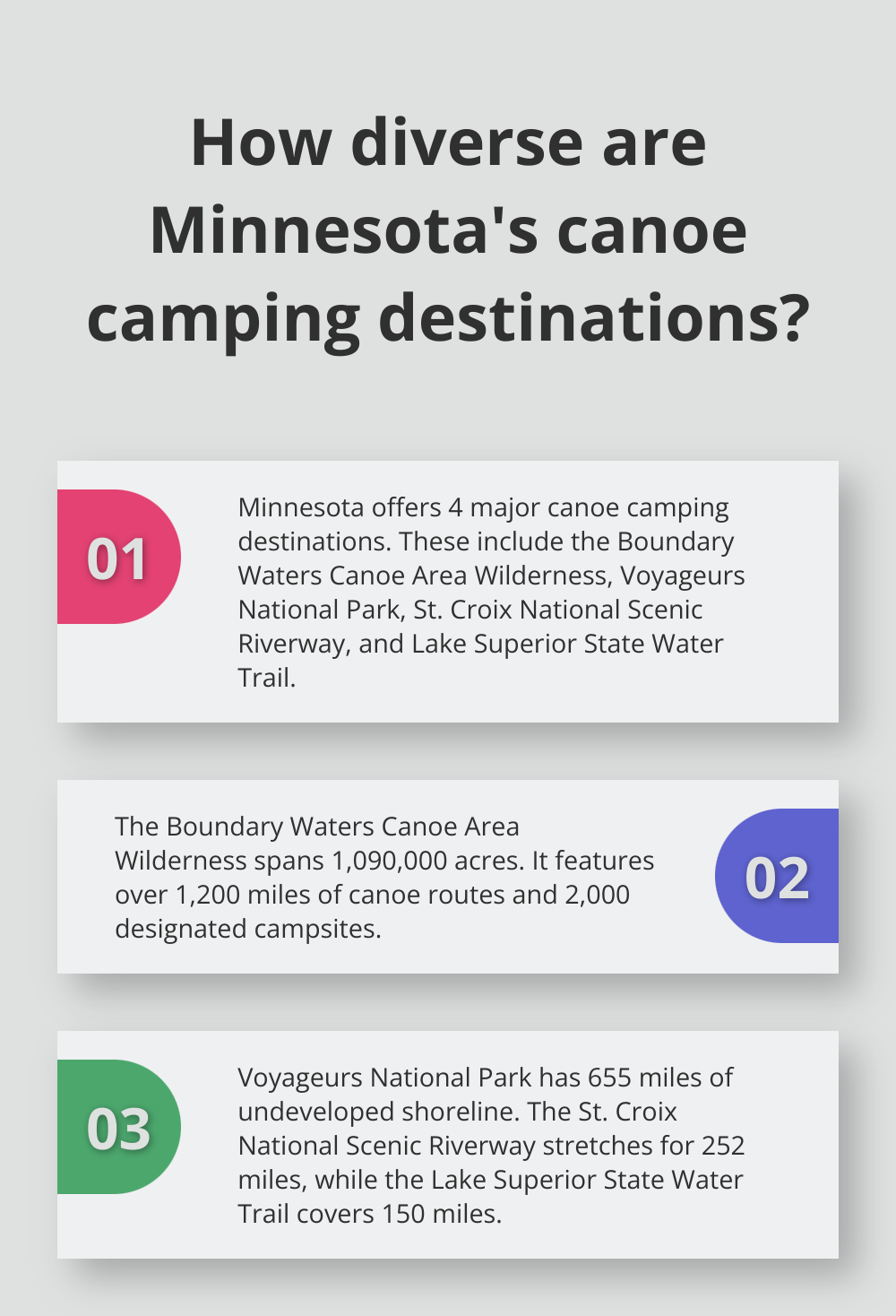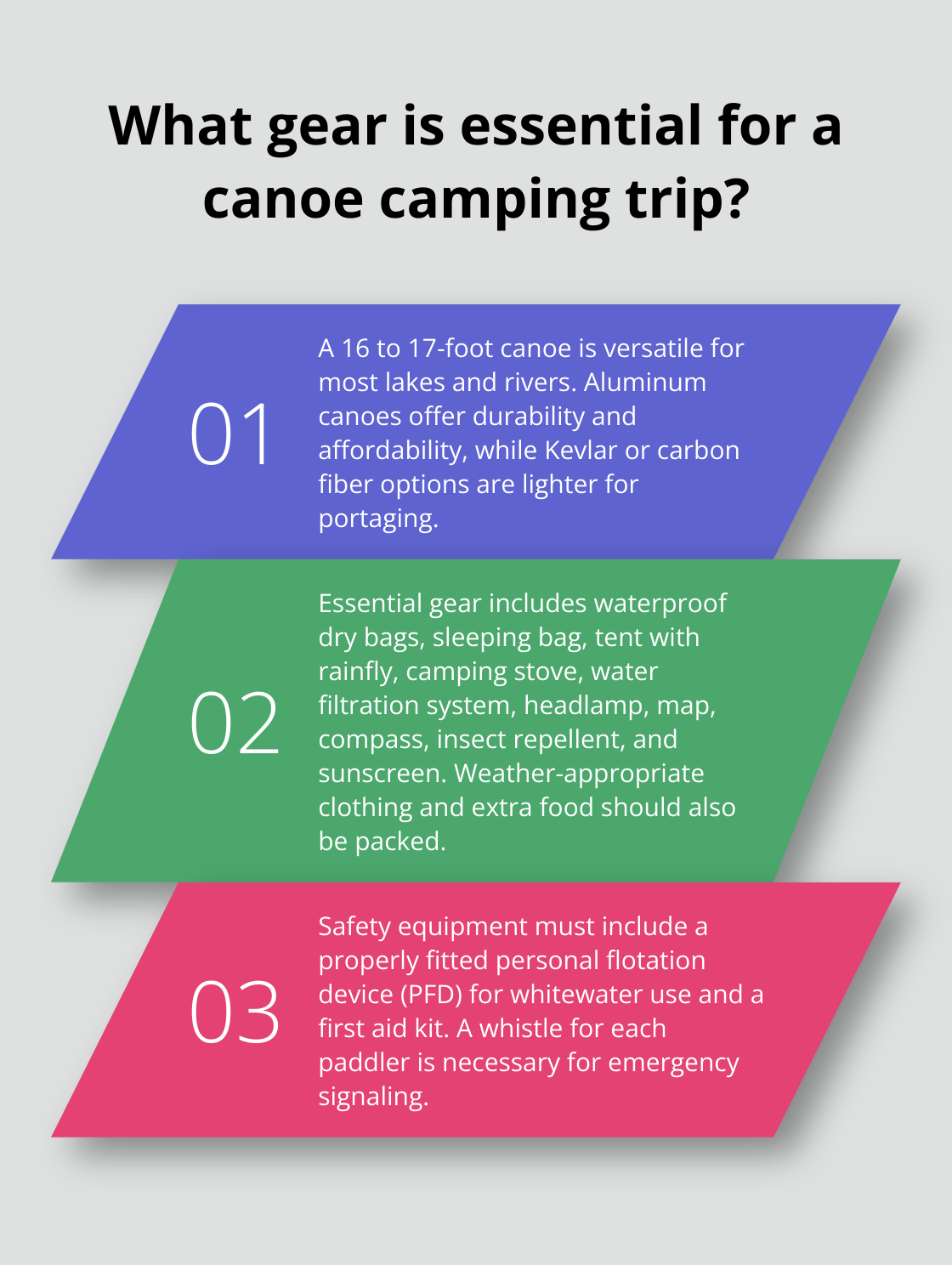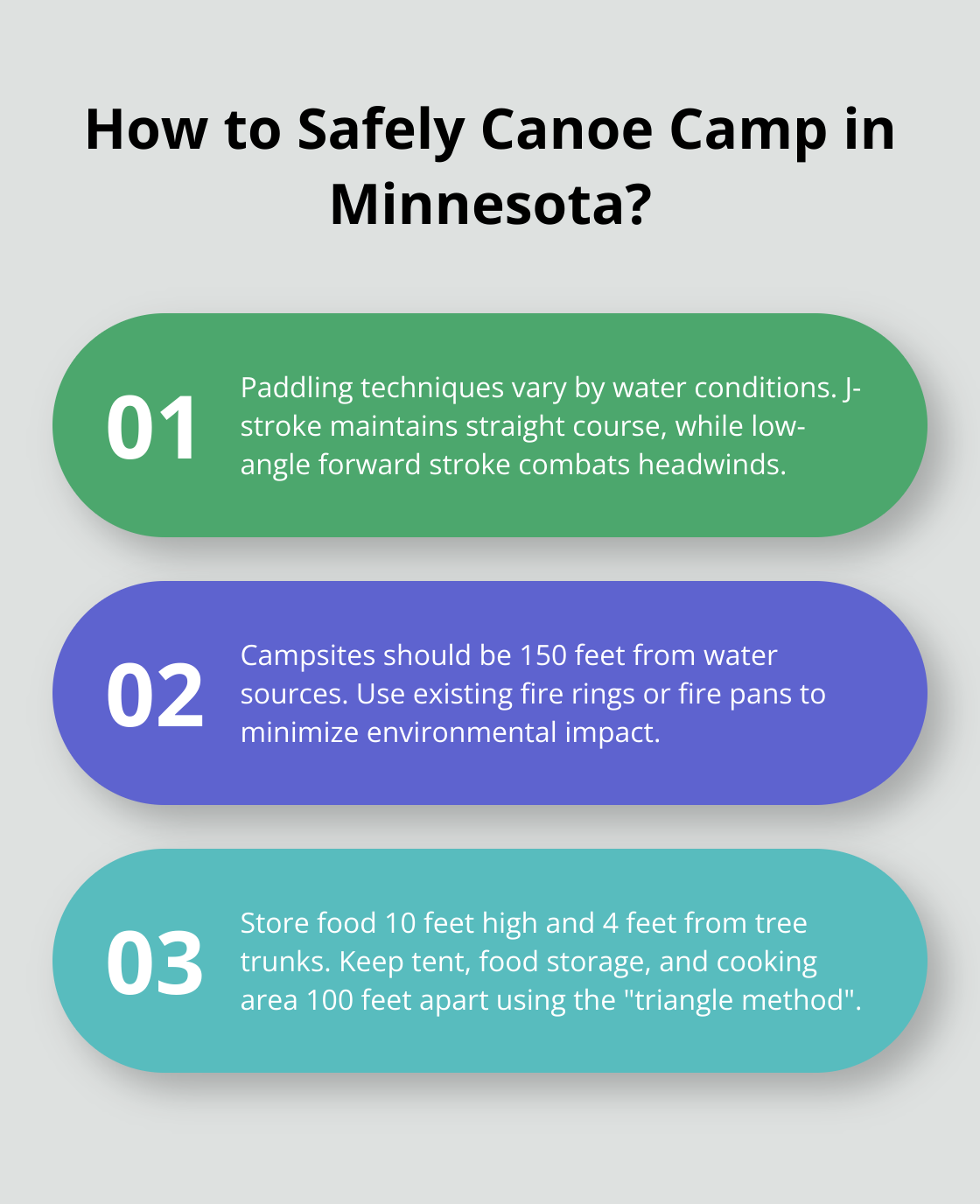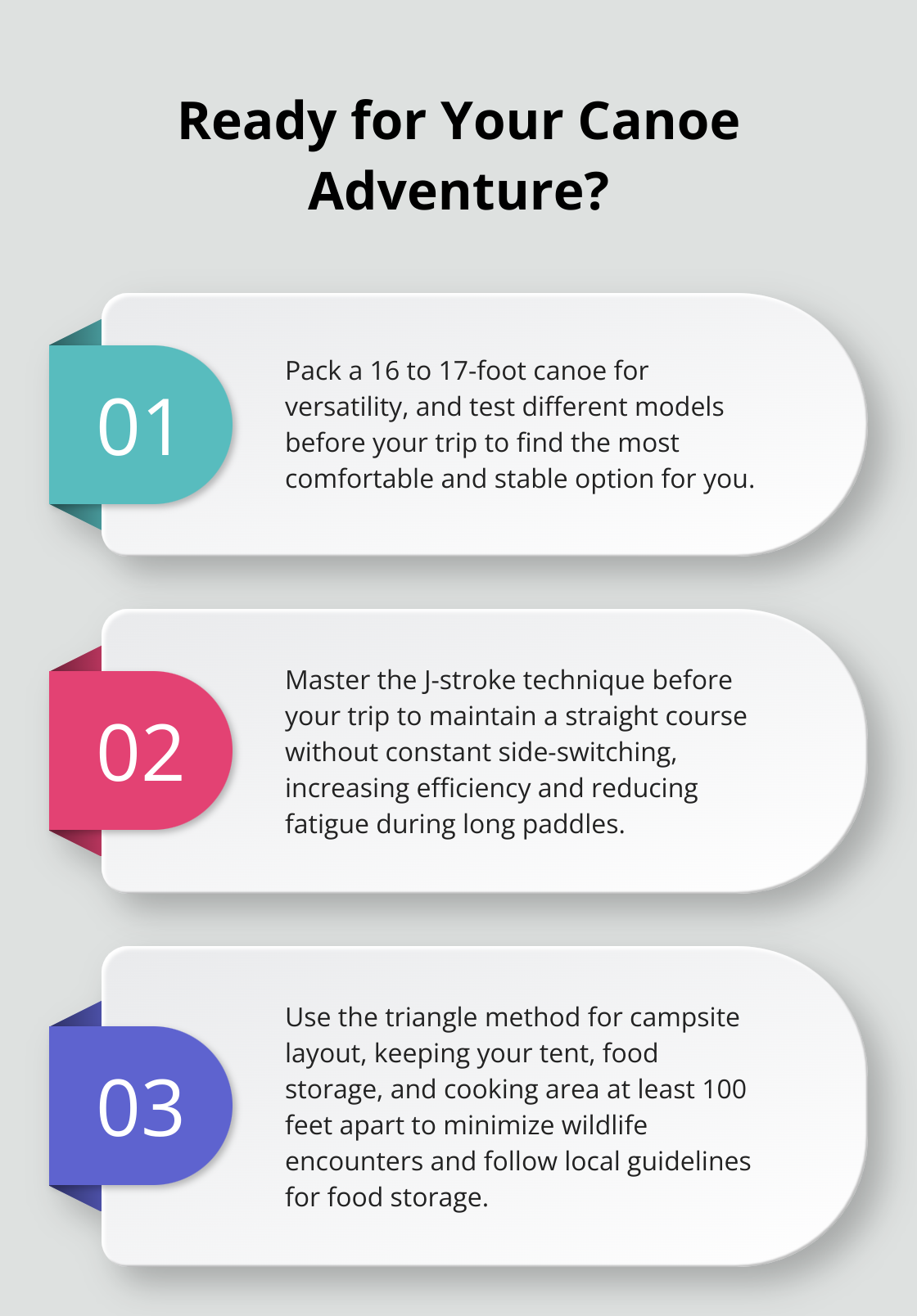Minnesota’s vast wilderness offers some of the best canoe camping trips in the country. From pristine lakes to winding rivers, the state’s waterways provide endless opportunities for adventure and exploration.
At Up North Property Management, we’ve seen firsthand how these experiences can create lasting memories. This guide will help you plan your perfect Minnesota canoe camping trip, covering top destinations, essential gear, and tips for a successful journey into the wild.
Where to Find Minnesota’s Best Canoe Camping Spots
Minnesota’s wilderness offers a wealth of canoe camping opportunities, each with its own unique charm and challenges. Here’s a rundown of the top destinations that should be on every canoe camper’s radar.
Boundary Waters Canoe Area Wilderness: A Paddler’s Paradise
The Boundary Waters Canoe Area Wilderness (BWCAW) stands as the crown jewel of Minnesota’s canoe camping destinations. It spans 1,090,000 acres and boasts more than 1,200 miles of canoe routes and 2,000 designated campsites. The BWCAW’s popularity necessitates permits, which can be competitive, especially during peak season (May to September). You should plan your trip well in advance. Consider visiting in early spring or fall for a quieter experience.
Voyageurs National Park: A Maze of Interconnected Waterways
Voyageurs National Park offers a unique canoe camping experience with its network of four large lakes and countless smaller ones. Unlike the BWCAW, motorized boats are allowed here, making it ideal for those who want a mix of paddling and relaxation. The park’s 655 miles of undeveloped shoreline provide ample opportunities for secluded camping. Don’t miss the chance to see the park’s famous houseboats (a quirky feature of this watery wonderland).
St. Croix National Scenic Riverway: A River Runner’s Dream
For those who prefer moving water, the St. Croix National Scenic Riverway is a 252-mile stretch of river perfect for multi-day canoe trips. The upper reaches offer a more wilderness-like experience, while the lower sections are more developed. This destination works well for beginners and families, with plenty of access points allowing for trips of various lengths. Keep an eye out for the diverse wildlife (including over 100 bird species that call this area home).
Lake Superior State Water Trail: Coastal Canoeing Adventure
For a completely different canoe camping experience, consider the Lake Superior State Water Trail. This 150-mile route along Minnesota’s North Shore offers a mix of paddling experiences. It’s not for the faint of heart or inexperienced, as Lake Superior’s conditions can change rapidly. However, the stunning cliffs, secluded beaches, and chance to paddle on the world’s largest freshwater lake by surface area make it an unforgettable adventure for skilled paddlers.

When you plan your canoe camping trip, consider factors like your skill level, desired level of solitude, and the type of scenery you’re after. Each of these destinations offers something unique, from the pristine wilderness of the BWCAW to the coastal drama of Lake Superior.
Now that we’ve explored where to go, let’s turn our attention to what you’ll need to bring. Proper gear and planning are essential for a successful canoe camping adventure.
Gearing Up for Your Canoe Adventure
Selecting Your Canoe
The right canoe can make or break your Minnesota wilderness experience. For most lakes and rivers, a 16 to 17-foot canoe provides versatility. Aluminum canoes offer durability and affordability, while Kevlar or carbon fiber options excel in portaging situations (due to their lighter weight). Many outfitters near popular destinations like the Boundary Waters provide a range of options. Test different models before your trip to find the most comfortable and stable option for you.
Essential Gear Checklist
Pack comprehensively yet lightly for your canoe camping adventure. Your must-have items include:
- Waterproof dry bags for clothes and gear
- Sleeping bag (rated for Minnesota’s climate)
- Tent with a rainfly
- Camping stove and fuel
- Water filtration system or purification tablets
- Headlamp or flashlight (with extra batteries)
- Map and compass
- Insect repellent and sunscreen
- Weather-appropriate clothing (including rain gear)
- Food for your entire trip (plus extra for potential delays)

Pack everything in waterproof containers or bags. Even skilled paddlers can tip a canoe, and Minnesota’s weather often surprises.
Safety Equipment and Skills
Safety should top your priority list. Always wear a properly fitted personal flotation device (PFD) designed for whitewater use on the water. Include a first aid kit with items for treating blisters, cuts, and burns in your pack. Learn basic first aid and CPR before your trip. Equip each paddler with a whistle for emergency signaling.
Master basic canoe rescue techniques before your adventure. The American Canoe Association recommends wearing a whitewater helmet and protective clothing suitable for extended swimming in cold water. Practice capsizing and re-entering your canoe in a controlled environment prior to your wilderness excursion.
Planning Your Route
Thorough route planning ensures a successful trip. Consider your group’s skill level and physical condition when choosing your path. The Minnesota Department of Natural Resources suggests beginners start with shorter trips on calmer waters (such as parts of the St. Croix River).
Study your route extensively before departure. Identify potential campsites, portage locations, and emergency exit points. Always inform a non-participant of your planned route and expected return date.
Monitor weather forecasts regularly leading up to your trip. Minnesota’s weather can shift rapidly, especially in areas like the Boundary Waters. Prepare to adjust your plans if conditions turn unfavorable.
With proper preparation and equipment, you’ll set the stage for an unforgettable canoe camping experience in Minnesota’s beautiful wilderness. Now, let’s explore some expert tips to enhance your adventure and ensure a smooth journey through Minnesota’s waterways.
Mastering Canoe Camping Skills
Paddling Techniques for Challenging Waters
Minnesota’s waterways present various conditions, from calm lakes to swift rivers. The J-stroke maintains a straight course without constant side-switching. Practice this technique before your trip to increase efficiency and reduce fatigue. For whitewater sections, learn the draw stroke to maneuver quickly around obstacles.

When facing strong headwinds (common on larger lakes like Superior), use a low-angle forward stroke to reduce wind resistance. Keep your paddle close to the water and use your core muscles to power through. In crosswinds, the person in the stern should use a stern pry to keep the canoe on course.
Choosing the Perfect Campsite
Selecting an ideal campsite improves comfort and preserves the environment. In the Boundary Waters, choose sites at least 150 feet from water sources to minimize impact. Look for level ground with good drainage and natural windbreaks.
When setting up camp, use existing fire rings where available. If you must build a new fire, use a fire pan or create a mound fire to protect the ground. Always check local fire regulations, as they can change based on conditions. In Voyageurs National Park, fire bans are not uncommon during dry periods.
Wildlife Safety and Food Storage
Minnesota’s wilderness hosts diverse wildlife, including black bears. To avoid unwanted encounters, store food and scented items in bear-resistant containers or hang them at least 10 feet high and 4 feet from the trunk of a tree. The Minnesota Department of Natural Resources recommends using the “triangle method” for your campsite layout, keeping your tent, food storage, and cooking area at least 100 feet apart.
If you encounter a bear, make yourself appear large, make noise, and slowly back away. Never run or climb a tree. According to wildlife biologists, most bear encounters in Minnesota end without incident when proper precautions are taken.
Wilderness Meal Planning
Proper nutrition maintains energy during your canoe trip. Plan for about 1.5 to 2 pounds of food per person per day. Choose lightweight, high-calorie options that require minimal cooking. Dehydrated meals offer a balance of nutrition and convenience.
For cooking, a compact camping stove is essential. The Minnesota Pollution Control Agency advises using camp stoves over open fires to reduce environmental impact. Always pack out all trash and food scraps to maintain the pristine wilderness for future visitors.
Final Thoughts
Minnesota canoe camping trips offer unparalleled opportunities to immerse yourself in stunning wilderness. From pristine waters to coastal drama, each destination presents unique challenges and rewards. Proper gear selection, route planning, and mastery of essential skills will enhance your experience and help preserve these precious ecosystems.

The journey matters as much as the destination in Minnesota’s wilderness. Take time to appreciate the serene beauty of lakes, the rush of rivers, and the diverse wildlife that call these waterways home. Minnesota’s wilderness has something to offer everyone, whether you’re a seasoned paddler or a first-time camper.
Up North Property Management provides exclusive vacation rentals that serve as the perfect base for your canoe camping adventures. Their properties ensure a comfortable stay before and after your wilderness expedition. We encourage you to embrace the spirit of adventure and explore Minnesota’s magnificent waterways (the wilderness awaits).
